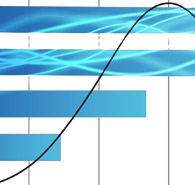Archive for the ‘PTSD’ Category
Wednesday, March 7th, 2012
 The careers of the scientist/practitioners in the field have undoubtedly had in common the experience of gradually rising expectations about what is possible to achieve in terms of improved self-regulatory capacity and mental functioning with the aid of neurofeedback. One might have expected some plateauing after a while, a firming up of one’s expectations, but the surprises keep coming and they are consistently on the upside. In our own experience, one of the biggest surprises has been the growing effectiveness of neurofeedback with PTSD, along with the related conditions of developmental trauma and the autism spectrum. All of these conditions had seemed so utterly intractable in the past. The careers of the scientist/practitioners in the field have undoubtedly had in common the experience of gradually rising expectations about what is possible to achieve in terms of improved self-regulatory capacity and mental functioning with the aid of neurofeedback. One might have expected some plateauing after a while, a firming up of one’s expectations, but the surprises keep coming and they are consistently on the upside. In our own experience, one of the biggest surprises has been the growing effectiveness of neurofeedback with PTSD, along with the related conditions of developmental trauma and the autism spectrum. All of these conditions had seemed so utterly intractable in the past.
In this newsletter, the focus on PTSD exists not only for its own sake, but also to serve as the best vehicle for the tackling of larger themes. What sets PTSD apart from our clinical work in general is the concentrated effort that has gone into this area by virtue of the great need among our returning veterans. We have attempted to meet this need through a non-profit entity, Homecoming for Veterans (hc4v.org), which has attracted even international participation among clinicians. As a result of these collective efforts, a large database of clinical results has been gathered that is now available for “data-mining.”
(more…)
Posted in Application of Neurofeedback, Clinical Methods, Neurofeedback, Protocols, PTSD, Research, Scientific, Veterans | 9 Comments »
Friday, November 11th, 2011

 On this Veterans Day we wanted to take a moment to thank all of the clinicians who have joined Homecoming for Veterans to support those in need by providing neurofeedback treatment for veterans with PTSD at no cost. Each day veterans are returning from deployments abroad and facing the challenges of life back home. We are so proud of the work that is being done by our network of clinicians, and want to encourage all of our colleagues who are practicing neurofeedback treatment to consider joining the Homecoming for Veterans team. On this Veterans Day we wanted to take a moment to thank all of the clinicians who have joined Homecoming for Veterans to support those in need by providing neurofeedback treatment for veterans with PTSD at no cost. Each day veterans are returning from deployments abroad and facing the challenges of life back home. We are so proud of the work that is being done by our network of clinicians, and want to encourage all of our colleagues who are practicing neurofeedback treatment to consider joining the Homecoming for Veterans team.
We all know this is a huge challenge. According to the Department of Veterans Affairs in June 2010, there were 171,423 deployed Iraq and Afghanistan war veterans diagnosed with PTSD, out of a total of 593,634 patients treated by the VA. But the toll goes beyond just the numbers. Every day we hear stories of vets who are returning home only to struggle with depression and alcohol and drug abuse. These health issues are leading to broken families, homelessness and in far too many cases, suicide.
(more…)
Posted in Application of Neurofeedback, Commentary, Health Care, Neurofeedback, Outreach, PTSD, Veterans | No Comments »
Monday, June 20th, 2011
 Today the web-based newspaper The Daily published a front-page article on Infra-Low Frequency Neurofeedback in application to PTSD. Along with the article there is also a six-minute video that illustrates the training procedure and basic approach. Reporter Katie Drummond did her homework on this topic over a number of months, finally coming out to our office from New York and showing up at our office with a video crew in order to try the training herself and to get acquainted with the principals. Today the web-based newspaper The Daily published a front-page article on Infra-Low Frequency Neurofeedback in application to PTSD. Along with the article there is also a six-minute video that illustrates the training procedure and basic approach. Reporter Katie Drummond did her homework on this topic over a number of months, finally coming out to our office from New York and showing up at our office with a video crew in order to try the training herself and to get acquainted with the principals.
(more…)
Posted in Application of Neurofeedback, Biofeedback, Commentary, Neurofeedback, Professional Issues, PTSD, Veterans, Video | No Comments »
Friday, May 27th, 2011
 The occasion of Memorial Day 2011 is a good opportunity to reflect on what has been happening in the remediation of PTSD using our latest Infra-Low Frequency (ILF) neurofeedback training. The word breakthrough is over-used, but it does describe the progress that has occurred over the last several years. The most significant event over that time frame was the actual utilization of our methods on a large scale in realistic settings within the military. By now more than 350 service persons have experienced this training at Camp Pendleton, one of six military bases where this work is being conducted. In this fashion, we were able to move from a series of isolated clinical observations in our clinic to a more substantial evaluation in a real-world environment, with independent clinicians guiding the neurofeedback training on the basis of our standard introductory training course, plus the occasional consultation. The occasion of Memorial Day 2011 is a good opportunity to reflect on what has been happening in the remediation of PTSD using our latest Infra-Low Frequency (ILF) neurofeedback training. The word breakthrough is over-used, but it does describe the progress that has occurred over the last several years. The most significant event over that time frame was the actual utilization of our methods on a large scale in realistic settings within the military. By now more than 350 service persons have experienced this training at Camp Pendleton, one of six military bases where this work is being conducted. In this fashion, we were able to move from a series of isolated clinical observations in our clinic to a more substantial evaluation in a real-world environment, with independent clinicians guiding the neurofeedback training on the basis of our standard introductory training course, plus the occasional consultation.
When neurofeedback is used on such a significant scale, even though it is in a clinical context, certain impressions take hold that rise to the level of accepted fact just as surely as if they had arisen out of a formal research program. For example, it was observed that service persons were more consistent in showing up for neurofeedback training than for any other mental health services on offer for PTSD. It is difficult to see such a finding coming out of formal research, where matters are typically more regimented and prescribed. Another advantage of the real-world setting is that a very broad range of symptom presentations is being encountered, as well as a distribution of symptom severity. This allows a comprehensive set of symptoms to be tracked through the training (on the order of 45 in this case), which would be quite atypical for a research design. An additional advantage was the opportunity to see some of the same persons both before and after deployment, so that impressions could be gained about the durability of the training effects in a combat environment. The clinical environment values the individual case, whereas in research such cases would be submerged in statistical analysis and the richness of detail would be lost.
(more…)
Posted in Neurofeedback, PTSD | 9 Comments »
Monday, November 23rd, 2009
 Up to this point, commentary on Major Hasan has had as much to do with us, the observers, as with Hasan himself, given how little we actually know about him. One wants to be careful not to jump to conclusions prematurely. That may also have been at work early on while Major Hasan was working at the Walter Reed Army Medical Center. The question has been raised as to why his colleagues at Walter Reed did not pick up on the various signs of instability and of mental disturbance in Major Hasan during his years there. Up to this point, commentary on Major Hasan has had as much to do with us, the observers, as with Hasan himself, given how little we actually know about him. One wants to be careful not to jump to conclusions prematurely. That may also have been at work early on while Major Hasan was working at the Walter Reed Army Medical Center. The question has been raised as to why his colleagues at Walter Reed did not pick up on the various signs of instability and of mental disturbance in Major Hasan during his years there.
The professional reluctance to identify Hasan as a problem may very well have been due to the “protective garb” provided him by his status as a psychiatrist. He was one of them. Beyond the simple reluctance to indict a professional colleague, there is also the assumption that such an individual has more resources to “pull himself together” and to conduct his life within acceptable bounds even if he has “issues.” The mental health disciplines have developed from a very rational framework that unsurprisingly places the rational order at the top of our regulatory hierarchy. In the disciplined mind, rationality rules the emotions. The will is unquestionably in charge of our actions.
(more…)
Posted in Application of Neurofeedback, Neurofeedback, Professional Issues, PTSD, Veterans | 4 Comments »
Thursday, November 12th, 2009
 I have the impression that my newspaper, The Los Angeles Times, printed more articles on veterans’ issues today than they printed articles about Labor on Labor Day. Veterans’ issues are ok to write about; we can show that at least our hearts are in the right place. Labor issues have become more inconvenient. But veterans’ issues include the matter of returning to the labor force once they have been returned to health. I have the impression that my newspaper, The Los Angeles Times, printed more articles on veterans’ issues today than they printed articles about Labor on Labor Day. Veterans’ issues are ok to write about; we can show that at least our hearts are in the right place. Labor issues have become more inconvenient. But veterans’ issues include the matter of returning to the labor force once they have been returned to health.
We now know how to recover veterans from all kinds of mental health issues through neurofeedback comprehensively, cost-effectively and quickly—regardless of whether we are talking about traumatic brain injury, Post-traumatic Stress Disorder, or other less devastating mental dysfunctions. The barriers to the diffusion of our innovation into actual practice are clearly institutional. Meanwhile, lip service continues to be given to the issues.
(more…)
Posted in Application of Neurofeedback, Neurofeedback, PTSD, Veterans | 2 Comments »
|
|
Subscribe to Email Newsletter
The EEG Info Newsletter circulates via email at least once a month. A variety of topics related to the Neurofeedback / EEG Biofeedback field are covered in over 200 articles.
|
 The careers of the scientist/practitioners in the field have undoubtedly had in common the experience of gradually rising expectations about what is possible to achieve in terms of improved self-regulatory capacity and mental functioning with the aid of neurofeedback. One might have expected some plateauing after a while, a firming up of one’s expectations, but the surprises keep coming and they are consistently on the upside. In our own experience, one of the biggest surprises has been the growing effectiveness of neurofeedback with PTSD, along with the related conditions of developmental trauma and the autism spectrum. All of these conditions had seemed so utterly intractable in the past.
The careers of the scientist/practitioners in the field have undoubtedly had in common the experience of gradually rising expectations about what is possible to achieve in terms of improved self-regulatory capacity and mental functioning with the aid of neurofeedback. One might have expected some plateauing after a while, a firming up of one’s expectations, but the surprises keep coming and they are consistently on the upside. In our own experience, one of the biggest surprises has been the growing effectiveness of neurofeedback with PTSD, along with the related conditions of developmental trauma and the autism spectrum. All of these conditions had seemed so utterly intractable in the past.
 Today the web-based newspaper The Daily published a front-page article on Infra-Low Frequency Neurofeedback in application to PTSD. Along with the article there is also a six-minute video that illustrates the training procedure and basic approach. Reporter Katie Drummond did her homework on this topic over a number of months, finally coming out to our office from New York and showing up at our office with a video crew in order to try the training herself and to get acquainted with the principals.
Today the web-based newspaper The Daily published a front-page article on Infra-Low Frequency Neurofeedback in application to PTSD. Along with the article there is also a six-minute video that illustrates the training procedure and basic approach. Reporter Katie Drummond did her homework on this topic over a number of months, finally coming out to our office from New York and showing up at our office with a video crew in order to try the training herself and to get acquainted with the principals. The occasion of Memorial Day 2011 is a good opportunity to reflect on what has been happening in the remediation of PTSD using our latest Infra-Low Frequency (ILF) neurofeedback training. The word breakthrough is over-used, but it does describe the progress that has occurred over the last several years. The most significant event over that time frame was the actual utilization of our methods on a large scale in realistic settings within the military. By now more than 350 service persons have experienced this training at Camp Pendleton, one of six military bases where this work is being conducted. In this fashion, we were able to move from a series of isolated clinical observations in our clinic to a more substantial evaluation in a real-world environment, with independent clinicians guiding the neurofeedback training on the basis of our standard introductory training course, plus the occasional consultation.
The occasion of Memorial Day 2011 is a good opportunity to reflect on what has been happening in the remediation of PTSD using our latest Infra-Low Frequency (ILF) neurofeedback training. The word breakthrough is over-used, but it does describe the progress that has occurred over the last several years. The most significant event over that time frame was the actual utilization of our methods on a large scale in realistic settings within the military. By now more than 350 service persons have experienced this training at Camp Pendleton, one of six military bases where this work is being conducted. In this fashion, we were able to move from a series of isolated clinical observations in our clinic to a more substantial evaluation in a real-world environment, with independent clinicians guiding the neurofeedback training on the basis of our standard introductory training course, plus the occasional consultation. Up to this point, commentary on Major Hasan has had as much to do with us, the observers, as with Hasan himself, given how little we actually know about him. One wants to be careful not to jump to conclusions prematurely. That may also have been at work early on while Major Hasan was working at the Walter Reed Army Medical Center. The question has been raised as to why his colleagues at Walter Reed did not pick up on the various signs of instability and of mental disturbance in Major Hasan during his years there.
Up to this point, commentary on Major Hasan has had as much to do with us, the observers, as with Hasan himself, given how little we actually know about him. One wants to be careful not to jump to conclusions prematurely. That may also have been at work early on while Major Hasan was working at the Walter Reed Army Medical Center. The question has been raised as to why his colleagues at Walter Reed did not pick up on the various signs of instability and of mental disturbance in Major Hasan during his years there. I have the impression that my newspaper, The Los Angeles Times, printed more articles on veterans’ issues today than they printed articles about Labor on Labor Day. Veterans’ issues are ok to write about; we can show that at least our hearts are in the right place. Labor issues have become more inconvenient. But veterans’ issues include the matter of returning to the labor force once they have been returned to health.
I have the impression that my newspaper, The Los Angeles Times, printed more articles on veterans’ issues today than they printed articles about Labor on Labor Day. Veterans’ issues are ok to write about; we can show that at least our hearts are in the right place. Labor issues have become more inconvenient. But veterans’ issues include the matter of returning to the labor force once they have been returned to health.
Clinicians Bring Hope for Veterans by Honoring Those Who Served
Friday, November 11th, 2011We all know this is a huge challenge. According to the Department of Veterans Affairs in June 2010, there were 171,423 deployed Iraq and Afghanistan war veterans diagnosed with PTSD, out of a total of 593,634 patients treated by the VA. But the toll goes beyond just the numbers. Every day we hear stories of vets who are returning home only to struggle with depression and alcohol and drug abuse. These health issues are leading to broken families, homelessness and in far too many cases, suicide.
(more…)
Posted in Application of Neurofeedback, Commentary, Health Care, Neurofeedback, Outreach, PTSD, Veterans | No Comments »